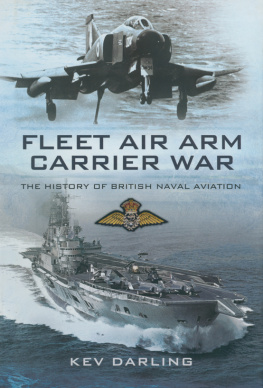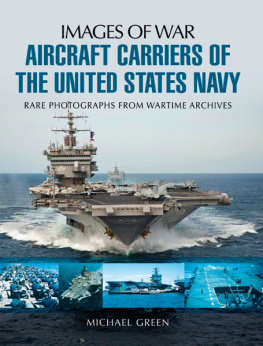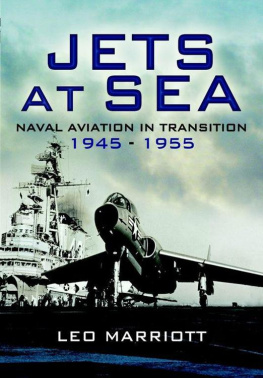Russian/Soviet Aircraft Carrier & Carrier Aviation Design & Evolution Volume 1
Seaplane Carriers, Project 71/72, Graf Zeppelin, Project 1123 ASW Cruiser & Project 1143-1143.4 Heavy Aircraft Carrying Cruiser
HUGH HARKINS
Copyright 2016 Hugh Harkins
All rights reserved.
ISBN: 153753484X
ISBN-13: 978-1537534848
Russian/Soviet Aircraft Carrier & Carrier Aviation Design & Evolution
Volume 1
Seaplane Carriers, Project 71/72, Graf Zeppelin, Project 1123 ASW Cruiser & Project 1143-1143.4 Heavy Aircraft Carrying Cruiser
Hugh Harkins 2016
Createspace Independent Publishing Platform
ISBN 10: 153753484X
ISBN 13: 978-1537534848
This volume first published in 2016
The Author is identified as the copyright holder of this work under sections 77 and 78 of the Copyright Designs and Patents Act 1988
Cover design Centurion Publishing & Createspace
Page layout, concept and design Centurion Publishing & Createspace
All rights reserved. No part of this publication may be reproduced, stored in a retrieval system, transmitted in any form, or by any means, electronic, mechanical or photocopied, recorded or otherwise, without the written permission of the publisher
The publisher and author would like to thank all organisations and services for their assistance and contributions in the preparation of this volume: JPSC Nevskoe Design Bureau; Krylov State Research Centre; United Shipbuilding Corporation (USC); Admiralty Shipyards; Russian Helicopters; S.P. Korolev Rocket and Space Corporation Energia; NPO Almaz; JSC Scientific Production Association Alloy; NPO Mashinostroyenia; Strela PA; Concern-Agat; JSC Concern Radio-Electronic Technologies (KRET); Rostec Corporation; JSC Klimov; Yakovlev OKB; NPO Saturn; Ministry of Defence of the Russian Federation (MODRF); USN; US DoD; UK MoD; Naval History & Heritage Centre; United States National Archives; Google Earth
CONTENTS
INTRODUCTION | i |
| 1914-1950 S SEAPLANE CARRIERS, PROJECT 71/72 AIRCRAFT CARRIERS AND THE GRAF ZEPPELIN | |
| PROJECT 1123, MOSKVA & LENINGRAD ASW HELICOPTER CARRYING CRUISERS FOR A CHANGING GEO-MILITARY CLIMATE | |
| PROJECT 1143-1143.4 KIEV, MINSK, NOVOROSSIYSK AND BAKU (ADMIRAL OF THE FLEET OF THE SOVIET UNION, GORSHKOV) | |
| OTHER SIGNIFICANT SOVIET/RUSSIAN AVIATION CAPABLE SHIPS PROJECT 1174, PROJECT 11780 AND PROJECT 1144 | |
| SHIPBORNE AVIATION HELICOPTERS AND FIXED WING V/STOL AIRCRAFT | |
| APPENDICES | |
| GLOSSARY | |
INTRODUCTION
In 2016, there were five Russian/Soviet designed and built aircraft carriers in existence, three of which were in operational service; the Project 1143.5 Admiral of the Fleet of the Soviet Union, Kuznetsov in Russian Federation naval service, the INS Vikramaditya (formerly the Project 1143.4 Heavy Aircraft Carrying Cruiser Baku / Admiral of the Fleet of the Soviet Union, Gorshkov ) in Indian naval service and the incomplete former Soviet Project 1143.6 Varyag in service with the Peoples Liberation Army Navy of China as the Liaoning . The other two carriers, the Project 1143 Kiev and Minsk Heavy Aircraft Carrying Cruisers had been decommissioned and formed museum exhibits in China.
This two volume series sets out to detail the stable of Russian/Soviet designed and built significant aircraft carrying vessels and their integral shipborne aviation assets. While Volume 2 will focus on the stable of conventional take-off carriers in service and projected future vessels, this first volume, Volume 1, focusses predominantly on the operational design genesis of the major aircraft carrying vessels of the Soviet era, the Project 1123 Moskva Class Anti-Submarine Warfare helicopter carrying Cruisers and the Project 1143-1143.4 Kiev and Improved Kiev Class Heavy Aircraft Carrying Cruisers. Space is allocated to early aviation carrying projects commencing with the Seaplane Carriers of World War 1 to aircraft carrier concepts of the 1930s and 1940s and the German Graf Zeppelin aircraft carrier that fell into Soviet hands at the end of World War II in Europe. An overview of other helicopter carrying vessels of the Soviet and Russian Federation eras is provided, including the Project 1174 Ivan Rogov Class Amphibious Assault Ships and the unbuilt Project 11780 helicopter carrying Assault Ship design of the early 1980s.
The development of the Moskva Class, and subsequently the Kiev Class, was, it could be argued, intrinsically linked to the development of ballistic and cruise missile submarines. These ships were in effect the first and second generation of Soviet aircraft carrying vessels that, with the introduction of the fourth of the Kiev Class, extended into the third generation. The various elements of the ships, such as major defensive and offensive weapon systems are covered in detail as is the operational doctrine that led to such ships coming into being. A separate chapter deals with the various aviation assets that would make up the air groups of the Moskva and Kiev Class helicopter and vertical/short take-off and landing fixed wing.
All technical information regarding the warships, systems and weapons has been provided by the respective design houses, developers and builder/manufacturers, as has much of photograph and graphic material used throughout the volume, which is also supported by photograph and graphic material from third party sources such as the Defence and intelligence service Departments of various NATO nations.
1914-1950 s seaplane carriers, project 71/72 aircraft carRiers and the graf zeppelin
In the second decade of the 21 st century, design studies were underway with the aim of building a nuclear powered aircraft carrier for the Russian Federation Navy to replace that services sole conventional powered Aircraft Carrying Heavy Cruiser, Admiral of the Fleet of the Soviet Union, Kuznetsov , which was, by that time, in her third decade of service, the four aircraft carrying cruisers of the Kiev Class and the two Moskva Class helicopter carriers having long since been retired. The design and building road to produce a Soviet and later Russian aircraft carrier force had been long and arduous, the Soviet Union facing trials and tribulations faced by no other aircraft carrier building nation. Among these were the wartime sieges, massive depletion of workforces due to the horrific death tolls on the eastern front and enemy occupation of land mass or cutting off of build and design centres. On top of this was the fact that wartime priorities for production resources inevitably went to the land and air forces locked in the largest clash of armies the world had ever seen as the Soviet Union struggled, first for survival and then to expel the Axis invaders from its soil before continuing on to take Berlin, the German capital, in 1945.
There are several points in history that could be defined as the commencement of air operations from ships at sea. However, it is an incontestable fact that the type of ship known as the aircraft carrier was born out of the labour pains of World War 1. There were, however, several landmark events leading up to the aircraft carrier as defined in the 20 th and 21 st centuries. For example, in 1806 the Thames Class Frigate HMS Pallas (launched in 1804), deployed kites used to scatter anti-Napoleon leaflets over France during the Napoleonic Wars, this considered to be the first air operation launched from a ship at sea. The first offensive air operation from a ship is considered to have taken place in 1849 when the Austrian ship Vulcano launched Montgolfiere hot air balloons on a failed attempt to drop small size bombs on the city of Venice. The pioneers of these audacious early ship launched air operations could hardly have dreamt that by the early 20 th century powered flight would become a reality, and that such machines would be operating from ships at sea.
Next page










